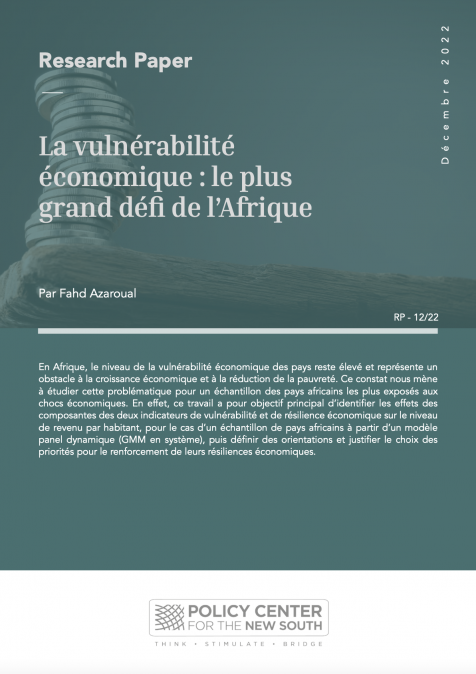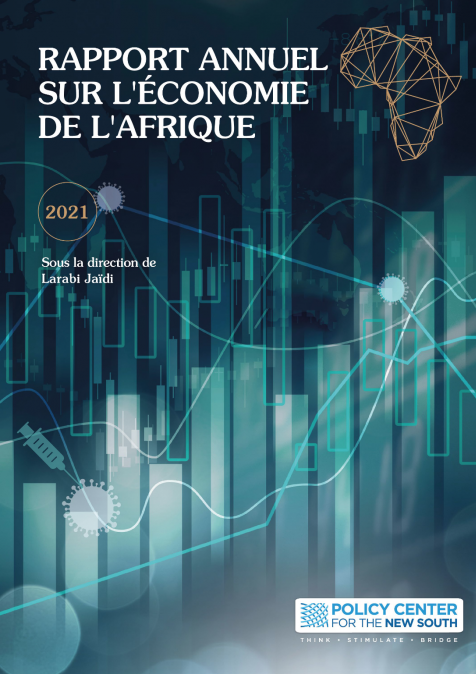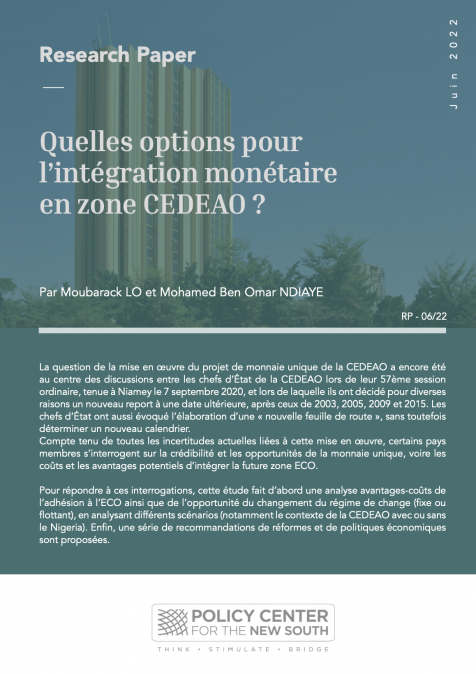Publications /
Policy Brief
This Chapter was originally published on Cape Town Chronicles
The history of debt in Africa is a long and painful one. It began in the 1980s, when the public finances of most developing countries deteriorated following two episodes of oil shocks, leading to a "lost decade" of low growth, increased poverty, and political instability. The recovery from the debt crisis only became possible following initiatives in favour of heavily indebted poor countries (HIPC) and the Multilateral Debt Relief Initiative (MDRI). Owing to these two initiatives, the average debt-to-GDP ratio in Africa decreased from over 65.9 percent in 2000 to 32. percent in 2010. In sub-Saharan Africa, the IMF estimated a reduction of nearly US$100 billion in debt during this period. This gave some breathing room to African countries to stabilise their current and future financial situation and promote development spending in the region.
However, due to the stagnation of official development aid following the global financial crisis, and the challenges faced by African countries in mobilising domestic resources to finance their massive needs for infrastructure and socio-economic development, a re-accumulation of debt in the region began in 2011. The trend was also facilitated by expanded and easy access to international financial markets at affordable interest rates. This accumulation has been more significant after 2013 and the commodity price shock. At the time, the economic situation caused cumulative currency depreciations, widened deficits, and a general deterioration of macroeconomic conditions in African countries in various ways. Indeed, between 2012 and 2017, real GDP growth in Africa fell from an average of 6.2 percent to 4 percent, while the average fiscal deficit increased from 2.1 percent of GDP to 5.5 percent. As a result, over this period more than two-thirds of sub-Saharan African countries have seen their public debt as a percentage of GDP increase by more than 10 percentage points, while a third of countries experienced an increase in the debt-to-GDP ratio of more than 20 percentage points.
The COVID-19 crisis, which had a significant impact on the public finances of countries across the continent, has worsened the challenge. The health emergency pushed the gross financing needs as a percentage of GDPa above the critical threshold of 15 percent for most countries in the continent, leading to an additional increase in debt levels of 10 to 15 percent. The average debt-to-GDP ratio in Africa has recently exceeded 70 percent. The immediate needs for public health and stimulus spending, combined with the drastic reduction in tax revenues following the global economic slowdown, and a similar drop in export revenues for resource-rich countries, have exerted an unbearable external pressure on the most vulnerable countries in the continent, which are now struggling to keep up with their interest payments. In 2020, debt service payments in more than 20 African countries comprised over 14 percent of public revenues, and in five of them, the ratio was a far higher 30 percent.
These higher debt levels across Africa have begun to raise concerns about a return to unsustainable debt levels, especially given the limited ability of countries to generate the necessary budgetary resources. Since 2016, the IMF and the World Bank have been sounding the alarm that the debt levels of some African countries are approaching pre-HIPC ratios, and that signs of a possible new debt crisis are becoming apparent. The source of these concerns is not only the rapid accumulation of debt, but also the changing structure of African debt and, in particular, the profile of creditors.
Indeed, Africa is no longer dealing with the same creditors as before. At the turn of the century, most of Africa's public debt was owed to multilateral institutions and some bilateral creditors of the Paris Club. As explained earlier, as a result of debt relief initiatives, these countries had been able to rebuild their debt capacity, giving them better access to market-based debt instruments. Thus, about 19 African countries entered the Eurobond market, taking advantage of the prolonged period of low interest rates that followed, and the strong demand from private investors. Private investors, seeking alternative low rates from developed countries, were attracted by the yield prospects offered by African sovereign bonds. This interest in commercial debt increased the share of private creditors from 20 percent in 2010 to more than 41.3 percent in 2020.
Along with the increase in private creditors in Africa, the profile of bilateral creditors has also changed. The share of external debt held bilateral lenders, mostly by traditional Paris Club members, declined from 52 percent in 2000 to 10.3 percent between 2000 and 2020, while China has strengthened its position as the largest lender to Africa. According to data from the Global Development Policy Center, China loaned about US$160 billion to African countries between 2000 and 2020. This lending has accelerated since 2010, from an average of US$2.5 billion between 2000 and 2009 to about US$12.3 billion per year over the past decade. In 2020, it was estimated that 17 percent of the total external debt of the sub-Saharan region is owed to China.
The increase in borrowing from non-Club de Paris creditors and commercial lenders has resulted in shorter maturity periods and higher refinancing risks. The significant rise since 2014 in the issuance of 10- and 15-year Eurobonds by many African countries, as well as nonClub de Paris loans with shorter maturities than traditional long-term concessional multilateral loans, has led to a concentration of sovereign debt maturities between 2024 and 2028. Consequently, it has forced debtor countries to refinance these loans under tight international financial conditions just as they were recovering from the legacy of the COVID period and are dealing with the new inflationary shock resulting from the war in Ukraine. This concentration of maturities increases the risk of debt distress for some countries in the continent; others, such as Zambia and Ghana, have already announced payment defaults.










